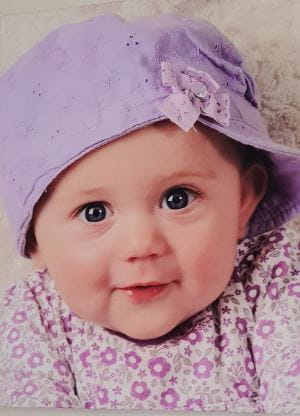National Drowning Report 2018
Australia’s peak drowning prevention and lifesaving bodies, the Royal Life Saving Society and Surf Life Saving have today released their annual reports outlining the impacts of fatal and non-fatal drowning deaths across the country during 2017/18.
The national reports were released by Senator the Hon Bridget McKenzie, Minister for Regional Services, Sport, Local Government and Decentralisation at Parliament House, Canberra.
Minister for Sport, Senator the Hon Bridget McKenzie said the Coalition Government is committed to reducing drowning in Australia. “I urge all Australians to watch their children around water, swim at patrolled beaches between the red and yellow flags, to wear lifejackets when on boats and watercraft, avoid alcohol around water and to teach their children about swimming and water safety,” said Minister McKenzie.
“We are a nation of water lovers and thanks to decades of campaigning we have brought our drowning rates down – but we need to move the dial even further. I especially want to encourage regional Australians to be alert around all waterways including rivers, creeks, dams and beaches. Keep an eye on your children, family and friends, and if you see someone being unsafe or struggling – raise the alarm,” she said.
The Royal Life Saving National Drowning Report shows that there were 249 drowning deaths and an estimated 551 hospitalisations resulting from non-fatal drowning incidents across Australia between 1 July 2017 and 30 June 2018. The figure is a 14% decrease on 2016/17. The Surf Life Saving National Coastal Safety Report 2018 reveals that 110 coastal drowning deaths occurred in the past year which is above the 14-year average of 99 drowning deaths.
There were 27 people who drowned in Western Australia in 2017/18, a 31% reduction on the 39 drowning deaths recorded in 2016/17 and a 21% reduction on the ten-year average. This represented the greatest decrease of any other Australian state or territory and the third lowest rate nationally.
Overall, 67% of those who drowned in Western Australia last year were male. Swimming pools were the leading location for drowning in 2017/18 (19%) and falls into water was the leading activity (22%).
Royal Life Saving WA Senior Manager, Health Promotion and Research Lauren Nimmo said, “This is lowest number of drowning deaths ever recorded in Australia and the lowest recorded in WA over the last five years. The figures show that drowning prevention initiatives continue to reduce the impacts of drowning across most waterways and age groups. However, we cannot be complacent about water safety.”
“While toddler drowning has dramatically reduced over time, there was a concerning spike in toddler drowning over the past year with five deaths recorded in WA. This is a significant increase from recent years and highlights this age group as a priority for drowning prevention initiatives in the WA community” said Ms Nimmo.
 Keep Watch Parent Ambassador Andrea Wakefield knows too well the devastation of losing a child to drowning. On the 7th August 2013 she did what so many working parents do, she kissed her inquisitive 14.5-month-old daughter Shelby goodbye as she headed out the door to get to work. But this was not going to be a day like any other - it was a day that would change her life. While being cared for at a relative's home, Shelby drowned in the backyard swimming pool after gaining access through a faulty barrier.
Keep Watch Parent Ambassador Andrea Wakefield knows too well the devastation of losing a child to drowning. On the 7th August 2013 she did what so many working parents do, she kissed her inquisitive 14.5-month-old daughter Shelby goodbye as she headed out the door to get to work. But this was not going to be a day like any other - it was a day that would change her life. While being cared for at a relative's home, Shelby drowned in the backyard swimming pool after gaining access through a faulty barrier.
Andrea says “Shelby is missed every day and there’s nothing we can do to bring her back. We only hope that her death can help raise awareness so that other children’s lives can be saved.” Andrea urges parents and caregivers not to be complacent when it comes to children around water. “Be aware of your surroundings, turn your phone off, take the headphones off, turn the TV off. While kids are in or around water; whether it’s a bath, the shower, the pool, the spa, whatever, just be really aware and Keep Watch.”
Home swimming pools were the most common location for drowning in WA with 19% of drowning deaths occurring at these locations. Lauren Nimmo says “home swimming pools are an integral part of the Australian way of life and are enjoyed by many Western Australians. However, with the majority of toddler drowning deaths occurring at these locations, we need to ensure home pool owners don’t become complacent. Often these incidents occur in the short time where parental supervision is absent and the child gains access through an open gate or faulty pool barrier. Therefore, it is essential that in addition to close adult supervision, home pools are secured by appropriate barriers that are regularly maintained and checked for faults to ensure that they prevent unwanted access by children.”
To stay safe around water Royal Life Saving and Surf Life Saving Australia urge all Australians to:
- Supervise children at all times around water
- Learn swimming and lifesaving skills
- Wear a lifejacket when boating, rock fishing or paddling
- Swim at a patrolled beach between the red and yellow flags
- Avoid alcohol around water
You can read the full story of Andrea Wakefield's personal experience of toddler drowning at the link below.

To download the full National Drowning Report 2018 please click the link below.
